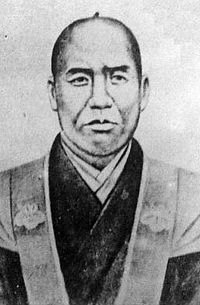The Shōgitai (彰義隊, "Manifest Righteousness Regiment") was an elite samurai shock infantry formation of the Tokugawa shogunate military formed in 1868 by the hatamoto Amano Hachirō and Hitotsubashi Gosankyō retainer Shibusawa Seiichirō in Zōshigaya, Edo (now Tokyo). The Shōgitai took a large part in the battles of the Boshin War, especially at the Battle of Toba–Fushimi, and, after being assigned the defence of Kan'ei-ji temple, the Battle of Ueno, where they were nearly annihilated.[1][2]
After the Battle of Ueno, some surviving Shōgitai fled north, eventually joining the rebels of the Ezo Republic. Following the defeat of Ezo, most of the few remaining former Shōgitai settled in Hokkaido as tondenhei.[3] Among the survivors was Toyohara Chikanobu, who later achieved fame as a master nishiki-e artist.
Notes
[edit]- ^ Japan J. J. Rein p.360
- ^ The last samurai Mark Ravina p.157
- ^ Shimozawa Kan (2006). Ame no oto ― Shimozawa Kan Bakumatsu Ishin shōsetsu-shū. Chūōkōron-shinsha. ISBN 9784122047006.



Well, that’s interesting to know that Psilotum nudum are known as whisk ferns. Psilotum nudum is the commoner species of the two. While the P. flaccidum is a rare species and is found in the tropical islands. Both the species are usually epiphytic in habit and grow upon tree ferns. These species may also be terrestrial and grow in humus or in the crevices of the rocks.
View the detailed Guide of Psilotum nudum: Detailed Study Of Psilotum Nudum (Whisk Fern), Classification, Anatomy, Reproduction